Kashan stands as one of Iran’s most significant and renowned tourist destinations, playing a pivotal role in the nation’s tourism industry. With a history spanning over 7,500 years, Kashan’s Silk Hill serves as a proof to its ancient roots. Kashan attractions supported by historical and archaeological evidence, holds the distinction of being one of the world’s oldest human settlements, remarkably preserving its historical essence to this day.
As a result, Kashan possess a wide array of diverse and captivating sights, which can be categorized into two primary groups: historical-ancient and natural attractions, along with traditional rituals. The historical-ancient Kashan attractions include iconic buildings such as the Borujerdi, Tabatabai, and Ameri houses, the historic market, and the underground city, among others. In terms of natural attractions, Niasar Cave stands out as a notable highlight of Kashan attractions.
Kashan’s Gulabgiri ceremony in May and Mehr festival also contribute significantly to the city’s cultural heritage. In the article in Parsi Tours‘ blog, we will explore these Kashan attractions in detail.
Fin’s Garden
Undoubtedly, one of the most beautiful and enchanting places to visit in Kashan is Fin’s Garden, a perfect exemplar of Iranian garden design. Historically, this place has held great significance, with references from the book of “History of Qom,” one of the oldest historical sources:
“The buildings and karizs of Fin were built by order of Jamshid.”
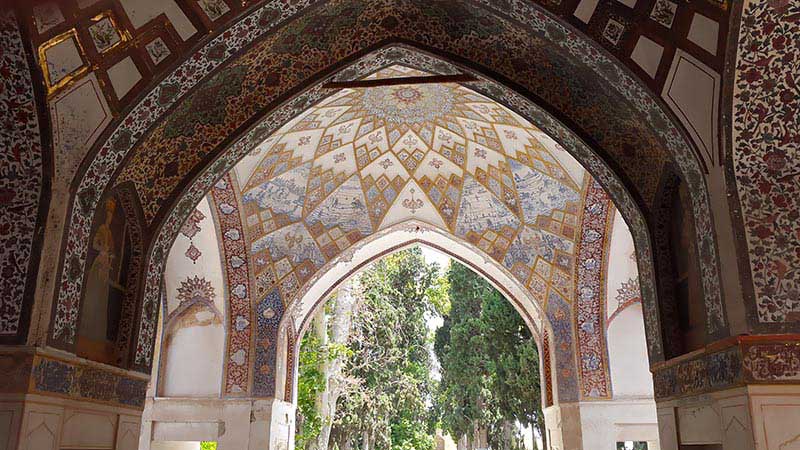
Fin’s Garden in Kashan
It is a visually pleasing area that has been cherished by kings throughout history and expanded during various ruling periods, including the “Al Boyeh” and “Ilkhanan” dynasties, and subject to renovations over time.
Fin’s Bath
Kashan is home to two important historical baths, located in the southern part of Fin Garden. These baths include the “big bath” (also known as the royal bath, built under the orders of Fath Ali Shah Qajar) and the “small bath” (used by servants).
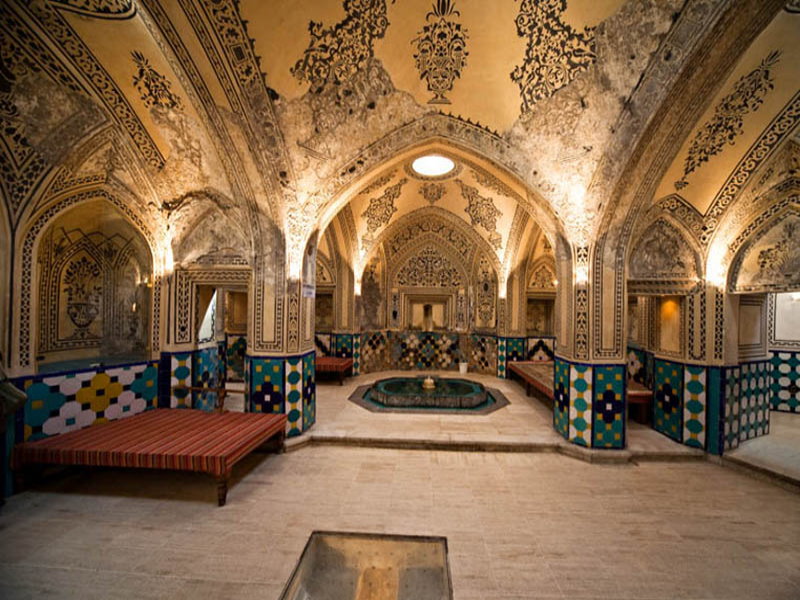
Fin’s Bath
The small bath, constructed during the Safavid era, predates the big bath and is historically significant as the site where the assassination of Amir Kabir, a pivotal and somber event in ancient Iranian history, occurred.
Kashan Grand Mosque
The city’s oldest historical building and one of Kashan attractions is the Kashan Grand Mosque, dating back to the Seljuk era. This remarkable religious structure was built with the assistance of Malik Ashtar’s daughter, Safiya Khatun.
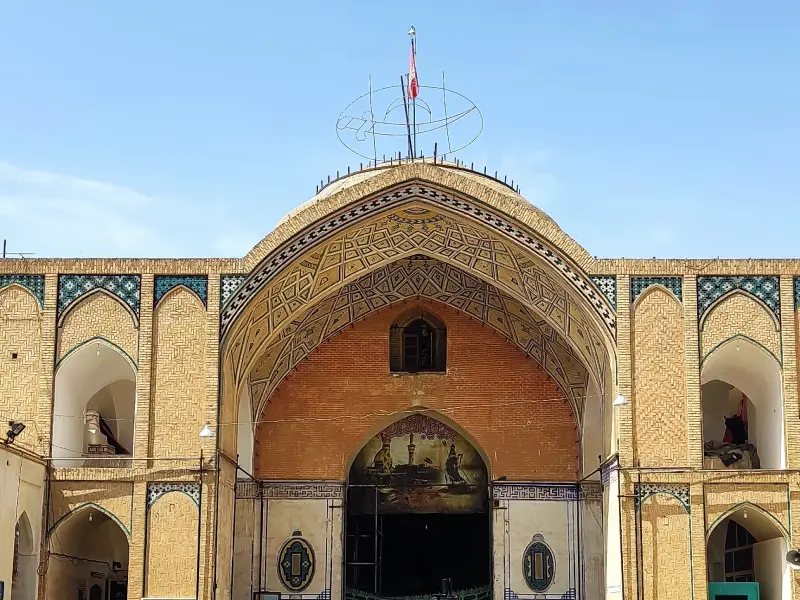
Kashan Grand Mosque
Over the years, it has undergone restoration and renovation during different eras, including the reigns of Karim Khan Zand and Abdul Razzaq Khan, the ruler of Kashan. The mosque’s walls feature calligraphy artistry by masters such as Abdul Karim and Ibn Mohammad Hossein Mohammad Kazem Isfahani.
Kashan Agha Bozorg Mosque and School

Agha Bozorg Mosque
Kashan’s Agha Bozorg Mosque and School as one of Kashan attractions, is a splendid architectural gem constructed during the Qajar period. Financed by Haj Mohammad Taghi Khanban, its completion occurred under the reign of Nasereddin Shah. The building’s dome boasts captivating architecture, rendering it a rare masterpiece for its time.
Niasar Kashan Fire Temple
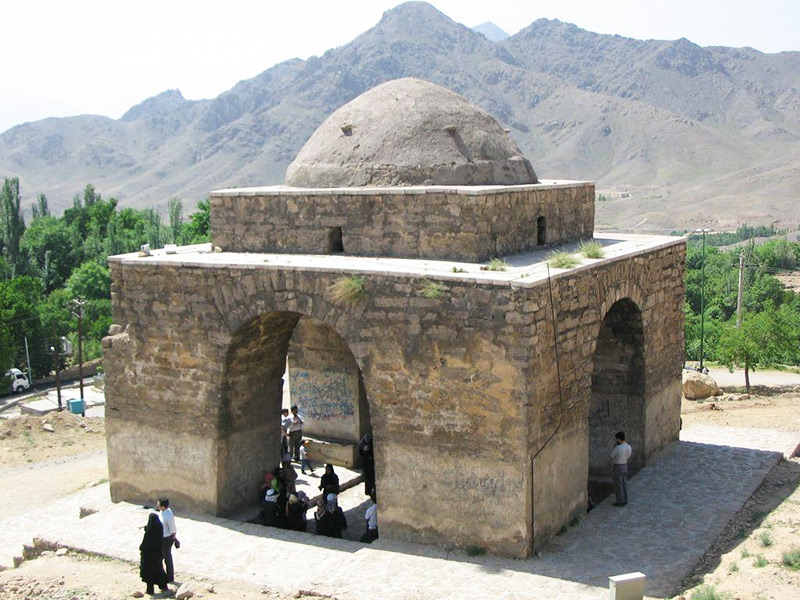
Chahartaq of Niasar Fire Temple
Perched in the heights of Niasar Kashan is a four-arched fire temple from the Sassanid era. This site, known as “Four Qapu” or “Four Gates,” served as a place for the Zoroastrian religious customs and rituals. Archaeologists have classified it among the oldest and largest examples of four-arched Iranian structures, notable for its well-preserved state compared to similar works.
Silk Hills of Kashan
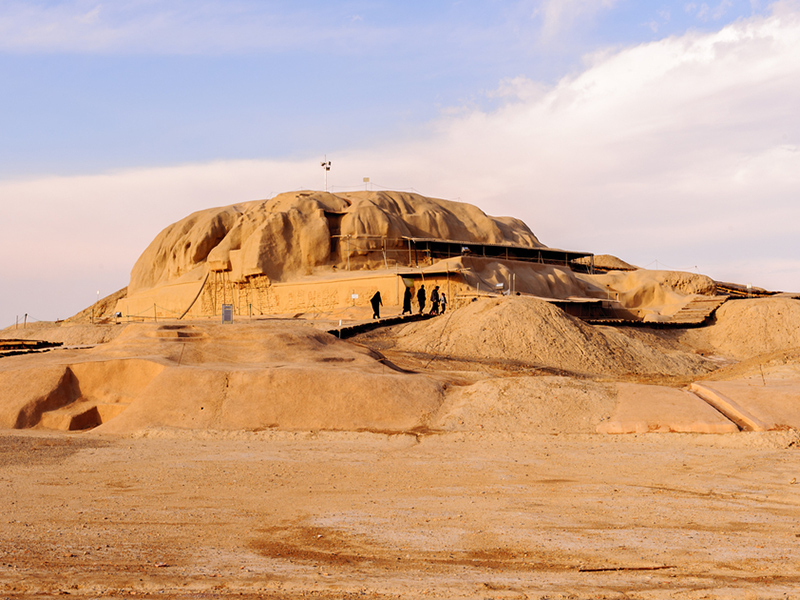
Signs of 7000 years’ civilization in Silk hills of Kashan
Exploring one of the world’s oldest human civilizations is a fascinating experience. The Silk Kashan hills are a magnet for history and archaeology enthusiasts. Cemeteries A and B have been dated to over 3500- and 3000-years BC, respectively, with archaeologists uncovering various layers of civilization. This ziggurat, composed of clay and pottery, remained hidden until it was unearthed after a flood eighty years ago, revealing its historical significance.
Tomb of Contemporary Poet Sohrab Sepehri
For literature and art enthusiasts, a visit to the tomb of the renowned poet and contemporary Iranian painter, Sohrab Sepehri, is a must. Located 42 km from Kashan in Mashhad Ardahal, this revered poet’s final resting place is within the courtyard of Imamzadeh Sultan Ali Ibn Mohammad Bagher in Ardahal village.
Boroujerdi’s House
Kashan attractions include numerous old mansions and houses celebrated for their remarkable and distinctive architecture, making them beloved tourist attractions in this historical city. One such treasure is Boroujerdi’s House, erected during the Qajar era. Notable features include the crescent-shaped wind deflectors and its symmetrical way of building on the roof top of the hall and the Kolah Farangi sections.
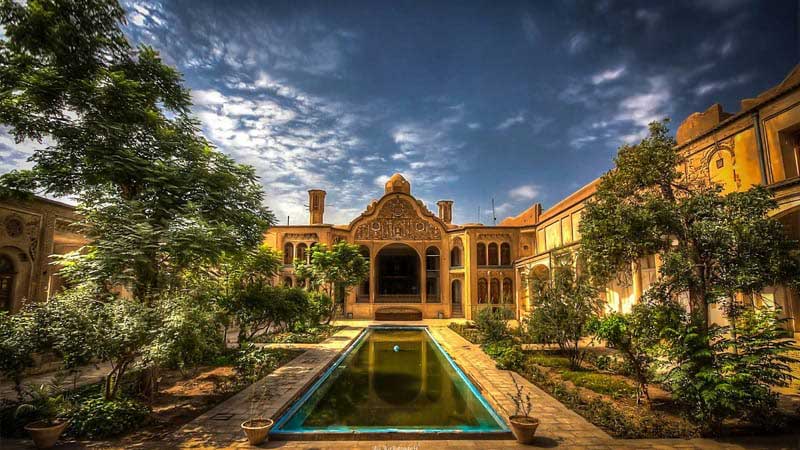
Borujerdi House
Situated on Alavi Street in the Sultan Amir Ahmad historical neighborhood, this house bears the inscription date of 1194 AH and derives its name from its owner, Mr. Hassan Borujerdi, who engaged in trade with Borujerd merchants. Boroujerdi’s House is considered an epitome of Iranian architectural excellence, exemplifying traditional techniques, intricate artistic adornments, and architectural innovation, especially in its unique covered outer courtyard—a symbol of Iran’s residential heritage.
Niasar Cave (Chief’s Hall Cave)
One of Kashan attractions is the spectacular Niasar Cave, located near Niasar village, bearing the same name. This tourism marvel, estimated to be almost 2000 years old, is entirely handcrafted, with human hands carving its intricate features. Multiple narratives explain the cave’s creation, with the most probable theory linking it to ritual and religious ceremonies.
Notably, the Niaser Cave aligns with Mithra’s religion, where water held immense significance, and followers practiced rituals such as washing, bathing, and enduring whip lashes. Inside the cave, water wells or boiling springs were common, leading to the excavation of the cave beneath. Niaser Cave’s unique features and its association with ancient religious customs make it a captivating site in Kashan’s landscape.
Kashan Traditional Market
Kashan’s traditional market as one of Kashan attractions, is a valuable historical treasure, renowned for its architectural beauty and historical significance. Once considered one of the world’s finest markets, it boasts a storied history spanning almost two thousand years. Notable accounts from scholars and historians praise the market’s magnificence and convenience.
Constructed during the Safavid era, the traditional market’s exceptional architecture, combined with its proximity to ancient trade routes, has solidified its status as one of Iran’s most beautiful and prosperous markets. While an earthquake in 1192 AH caused significant damage, the market’s current structure, a testament to Qajar-era architectural artistry, has preserved its legacy.
Qamsar Kashan
Qamsar Kashan, celebrated for its fragrant and renowned rose water, ranks among Iran’s most captivating destinations. This enchanting land, and one of Kashan attractions, abundant with fragrant flowers, transforms into a paradise during spring, attracting tourists from around the world. The mesmerizing rose fields, the intoxicating fragrance, the refreshing spring air, and the enthralling spectacle of water harvesting in Qamsar Kashan contribute to its status as an unforgettable experience for travelers.
Noushabad Underground City (Oui Complex)
In close proximity to Kashan and the city of Noushabad lies an underground city, reaching depths of 4 to 18 meters, entirely constructed by human hands. This subterranean complex span three floors, encompassing various chambers, numerous passageways, corridors, wells, and other compartments, interconnected by vertical wells.
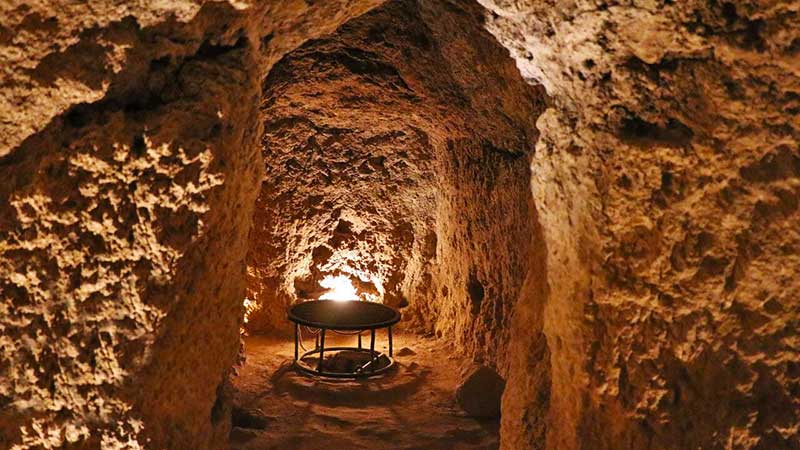
Noushabad Underground City
Known as the Oui complex, this historical wonder in Noushabad, predating Islam, is believed to have served military and defensive purposes during different historical epochs. Oui stands as the world’s largest underground city, extending beneath the city’s fabric, with estimates of its depth ranging from 4 to 18 meters and a length of approximately 4 kilometers. Archaeologists have noted traces of diamond-like tools on its walls, emphasizing the extraordinary effort involved in its construction.
Abyaneh Village
Abyaneh Village is undeniably one of Iran’s most beautiful and distinctive villages and one of Kashan attractions, attracting tourists from all corners of the globe. Nestled atop steep slopes north of the river, its houses feature wooden sash windows and exteriors adorned with red soil. A visit to this picturesque locale refreshes both body and soul, courtesy of its captivating natural scenery and mesmerizing sights.
Conclusion
Beyond these highlighted Kashan attractions, it offers a wealth of additional points of interest, including the Tabatabai House, Khawaja Tajuddin’s Tomb, the National Museum of Kashan, the Abbasian House, the Amiri House, the Sultan Amir Ahmad Bathhouse, the Maranjab Caravanserai, the Mir Emad Kashan Mosque, the Gabr abad Bridge, the Kamal al-Molk Village, the Khorramdasht Fire Temple, Van Village, Azaran Barzak Village, Seyyed Ziauddin and Hazrat Ali (PBUH) holy area, Sansen Kashan Caravanserai, Soltanieh School, Zainuddin Minaret, Jalali Castle, Heshmatullah Khan House, and Razzakian House, among others.
Frequently Asked Questions
Where is Silk Hill?
Silk Hill is located in Kashan, Iran, and is believed to be one of the oldest human civilizations in Central Iran, with a history dating back approximately eight thousand years.
What is the reason for the fame of Fin’s Bath?
Fin’s Bath is historically renowned as the site of the assassination of Amir Kabir, a significant and distressing event in ancient Iranian history.
How was Silk Hill discovered?
Silk Hill was uncovered after a flood approximately eighty years ago, revealing its historical significance and leading to its study as a valuable historical monument.
How was Niasar Cave created?
The creation of Niasar Cave, also known as the Cave of the Boss, is associated with various narratives, with the most plausible explanation being its construction for the purpose of holding ritual and religious ceremonies.



